
Plant of the Month November 2023
GENERAL INFORMATION:
Now is the time to think about seed orders. With an early start, many biennials and perennials will flower in their first year.
Foxgloves are one of my favourites. As a child, I loved putting the large pink bells of Digitalis purpurea on my fingers. (“Fingerhut” - Lady’s Glove in Germany). We saw plants in the wild on visits to the south and west of Stratford-on-Avon near where I grew up. (Shakespeare does not mention foxgloves, indicating he really wrote the plays as other possible authors would have seen many in their neighbourhoods.)
I have observed D. purpurea growing in the wild and naturalized in North America, New Zealand, etc. I found D. lanata growing in Greece and surprisingly naturalized in our small local ravine system here in Toronto. D. grandiflora was growing at woodland edges on lower slopes of the French Alps. D. thapsi is Spanish. We saw patches growing in stoney ground in full sun.
The genera, Digitalis and Penstemon, are now in the Plantaginaceae, no longer in the large family of Scrophulariaceae. Linnaeus reputedly dumped several groups in this family as their differences were minor!
The medical use of digitalis was popularized by a Birmingham, UK, doctor, William Withering, whose book, 'An Account of the Foxglove', was first published in 1785. He treated patients with foxglove leaves for dropsy, but noticed their effect on the heart. He ended with saying that foxgloves might produce a valuable heart drug in the future. Digoxin, extracted from Digitalis lanata was very important but is now mostly synthetic.
Synonym: Digitalis 'Café Crème’, a name used for marketing.
Common Name: Woolly foxglove or Grecian foxglove.
Life Cycle: Herbaceous biennial or short-lived perennial.
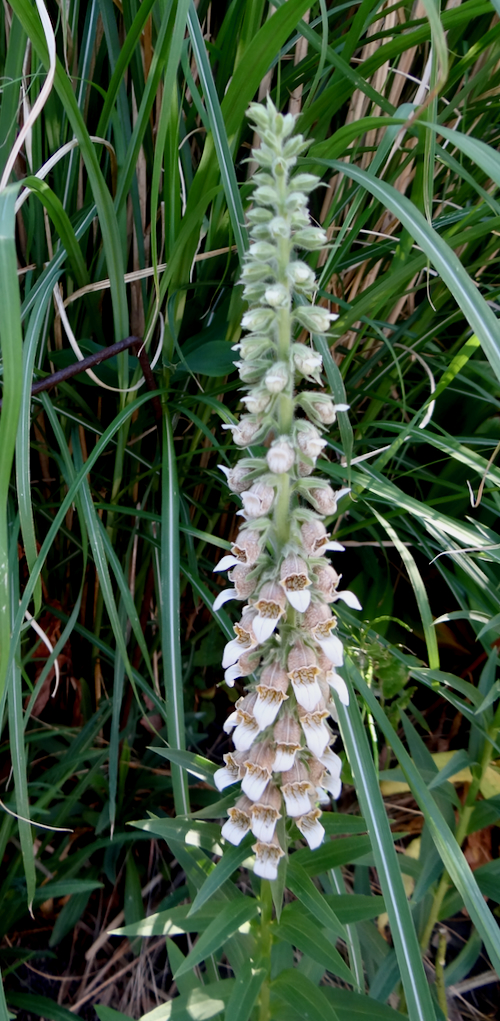
Digitalis lanata.
Bloom Time: June - July, with more flowers into August if the spent stem is removed above any leaves.
Height: Flowering stem 60 - 75 cm.
Leaves: Low evergreen rosette for the first year with numerous, mid-green, stalkless leaves. These are lanceolate, up to 15 cm long, 2-3 cm wide with 3-4 parallel veins. The leaves are supposedly hairy at the base and undersides. My plants do not show this. 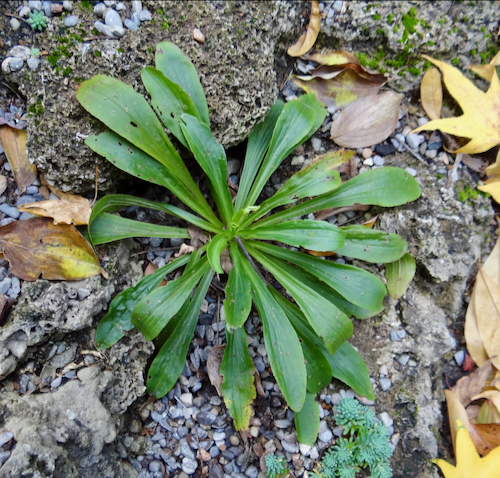
Digitalis lanata - winter leaves.
Flower Colour & Size: Many 2.5 cm long, tubular to bell-shaped flowers are densely packed on a leafy, wooly (lanata) stalk. The sepals and the outside of the corolla are hairy. The tubes are white, with honey-brown reticulate netted veins on the inside. The lower central lobe forms a white tongue, sticking out about 1 cm. 4 stamens are clustered above this at the tube entrance.
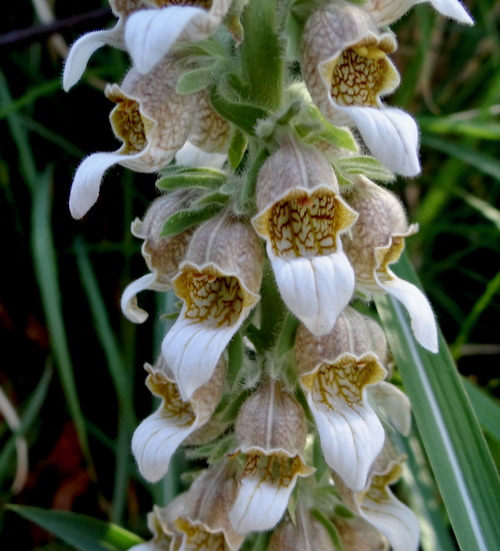 Digitalis lanata - inflorescence.
Digitalis lanata - inflorescence.
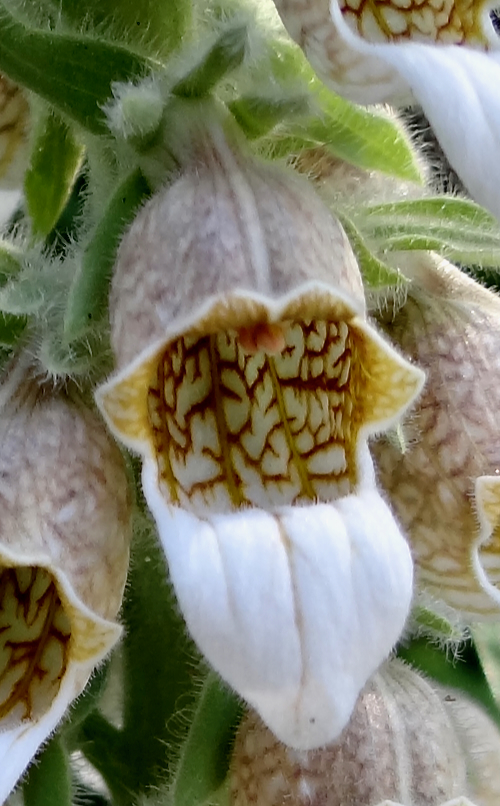
Digitalis lanata - close up of flower.
Fruit: 2-chambered, pointed, conical capsule about 1 cm long, with numerous seeds.
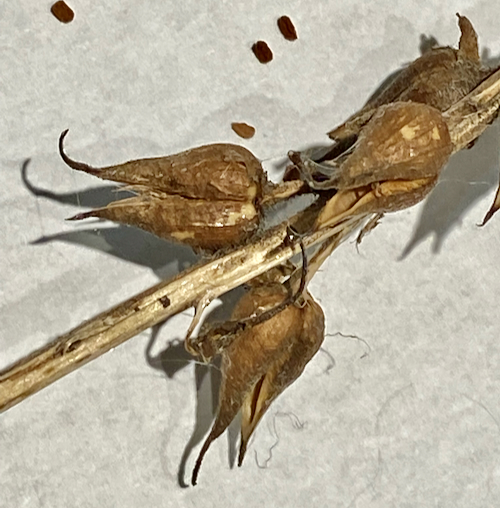
Digitalis lanata - capsules with seeds.
Range: Native to Eastern Europe to Turkey. Naturalized in other parts of the world. Invasive in some parts of the US.
Habitat: Grasslands and woodland edges.
CULTIVATION:
Light: Half shade to full sun.
Soil: Most soils - prefers neutral to acid with plenty of organic material.
Water: Average. Withstands drought when well established.
USDA Hardiness: Zones 4-9.
Companion planting: Woodland edge plants. N.B. may hybridize with other Digitalis.
Propagation: Will self-seed. Starting indoors, sow @ 20°C in light. Seed will germinate within 3 months. Basal offshoots can be removed and rooted.
Problems: All parts toxic. Crown and root rot can occur if the plant is waterlogged.
References:
https://onrockgarden.com/index.php/germination-guide
https://en.wikipedia.org › wiki › Digitalis_lanata
https://www.minnesotawildflowers.info/flower/grecian-foxglove
William Withering, An Account of the Foxglove, 1785.
Text and images supplied by Anna Leggatt (Toronto Master Gardener)
